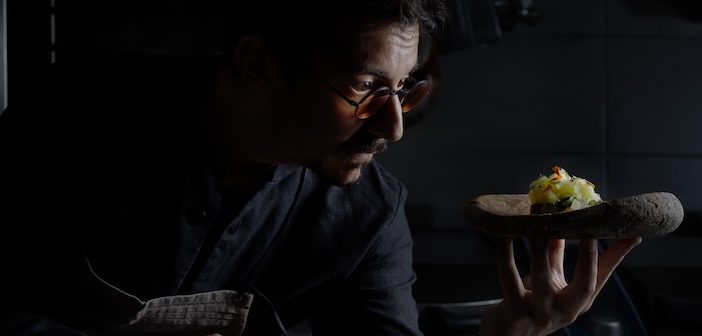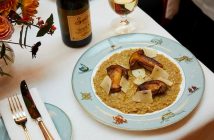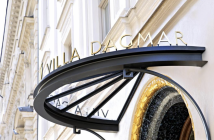In a quarter of Athens away from selfie-stick-wielding tourist groups and stalls peddling suggestive souvenirs, where buildings convene like thinkers and the air smells faintly of thyme and unleaded, there is a restaurant which neither clamours for attention nor shrinks from it. CTC Urban Gastronomy unfurls behind deep red walls on Plateon Street.
CTC – an acronym for ‘Cook. Transform. Create.’ – also echoes a Greek phrase meaning ‘nutrition’. Whether by coincidence or design, it fits a place which trades in dual meanings and culinary sleight of hand, where nothing is quite as it seems and everything is made to be tasted twice – first by the mouth, then by the mind.
 This is the creation of Alexandros Tsiotinis – a name which could just as easily belong to a philosopher as to a chef. He is softly spoken, immaculately bespectacled, and charming in a way which suggests he’s thinking three courses ahead even as he welcomes you. His cooking is precise, expressive and deeply considered. Before opening CTC at the age of 29, he trained at the Paul Bocuse and Ferrandi schools in France, refining his craft in the kitchens of Passard, Bras, Barbot, Fréchon and Darroze – a roll call of culinary ideologues who shape thought as much as food. But his earliest lessons were closer to home – slinging plates at Palmie bistros and learning the rhythms of a Greek kitchen at Hytra.
This is the creation of Alexandros Tsiotinis – a name which could just as easily belong to a philosopher as to a chef. He is softly spoken, immaculately bespectacled, and charming in a way which suggests he’s thinking three courses ahead even as he welcomes you. His cooking is precise, expressive and deeply considered. Before opening CTC at the age of 29, he trained at the Paul Bocuse and Ferrandi schools in France, refining his craft in the kitchens of Passard, Bras, Barbot, Fréchon and Darroze – a roll call of culinary ideologues who shape thought as much as food. But his earliest lessons were closer to home – slinging plates at Palmie bistros and learning the rhythms of a Greek kitchen at Hytra.
CTC is not a restaurant in the conventional sense. It is a calmly persuasive argument about what modern Greek gastronomy might be when expressed in courses instead of paragraphs. Designed by Stamos Hondrodimos, the dining room is serene and composed, dressed in soft tones and considered lines, lit by a planet lamp. Outside, a courtyard waits for the season to turn warm again. You are greeted on the pavement by someone who knows your name and delivers it as if it belongs.
There is no menu. The eleven-course tasting sequence is revealed slowly, introduced with a few well-chosen words, each pairing gently reasoned. The room moves at an even pace. There is music, but it does not interrupt.
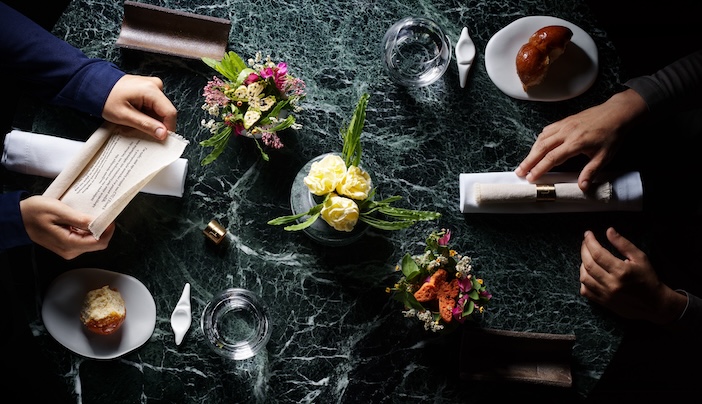
An aperitif arrives soon after you sit – a clarified gimlet made with cucumber, watermelon and a flicker of bergamot. Cool, thick and gently assertive, it’s a civilised nudge into the experience to follow.
The first course: sunflower root tea, poured hot into a cup seemingly hewn from basalt, served with a nutty buckwheat cake and a sweet crab salad brushed with smoke and heightening apple. Then langoustine tartare, with Parmesan cream and concealing oyster leaf – which gives a sharp, briny nudge on contact.
An omelette of tomato, feta and sweet pepper arrives in an eggcup held by a carved bird’s foot – a moment of theatre which raises a smile. Sourdough breadsticks twisted with Gruyère and garlic accompany. Then a pretty kohlrabi flower with oyster emulsion, Oscietra caviar and retsina ice cream – paired with a six-year-old Sauvignon Blanc from Thessaly. It works unexpectedly well, though it’s served on a plate which evokes a miniature tractor tyre.
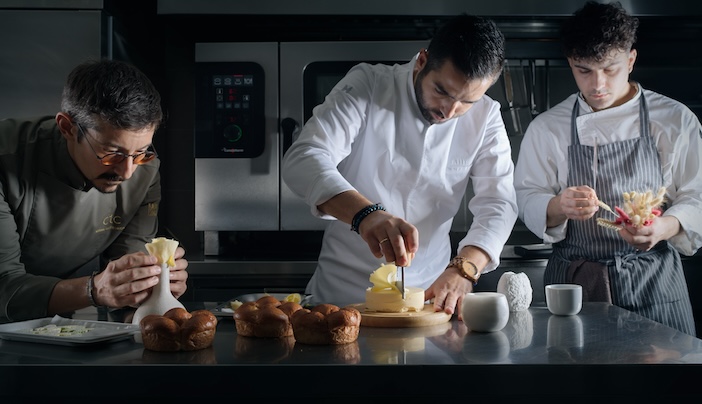
The bread course – so often a filler, so rarely a thrill – is treated with gravity and flair. A brioche folded with dolmas leaf purée comes with citrus butter in the shape of a butterfly, ringed with dried flowers. Whimsical, yes – but outrageously good.
A small, precise take on souvlaki follows – pork skin cooked overnight, cucumber, pickled onion and smoked tzatziki – balancing tradition and reinvention. Then a velouté of sweetcorn with lobster, truffle and bergamot – a dish which has persisted for over a decade, and still earns its place.
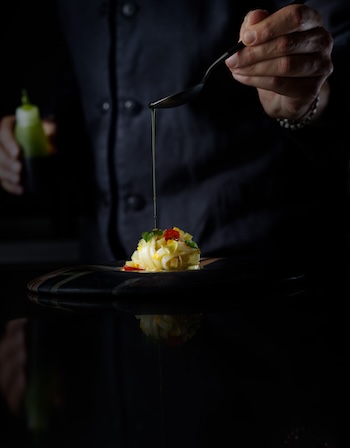 Three Assyrtikos accompany three ideas. The first, from Thrace – unfiltered, brisk – with the velouté. The second, aged in clay dolia by Kechris and called ‘Tear of the Pine’, alongside actual calamari tagliatelle with tomato water, beurre blanc and pine nuts. The retsina notes and basil oil nod to nostalgia without slipping into it. The third Assyrtiko, from Santorini, accompanies slow-cooked grouper in a sauce of fish collagen – texturally divisive, but intriguing.
Three Assyrtikos accompany three ideas. The first, from Thrace – unfiltered, brisk – with the velouté. The second, aged in clay dolia by Kechris and called ‘Tear of the Pine’, alongside actual calamari tagliatelle with tomato water, beurre blanc and pine nuts. The retsina notes and basil oil nod to nostalgia without slipping into it. The third Assyrtiko, from Santorini, accompanies slow-cooked grouper in a sauce of fish collagen – texturally divisive, but intriguing.
The meal’s only red is Sclavos’ biodynamic ‘Monambeles’ from Kefalonia – black olive, balsamic, and distant thunder – poured for a rabbit stifado of chestnut mousseline inside neat ballotines, miniature onion and red berry pies, a plate which hints at hedgerows and feels delightfully cheeky for Easter.
Dessert, overseen by pastry chef, Myrto Ritsi, begins with a raspberry and cassis sorbet under a light almond and chamomile foam. Then a strawberry and lemongrass composition, the pistachio rendered in multiple forms, paired with a six-year-old sun-dried Samos Muscat served cool. The best match of the evening.
Mignardises land last – a tart of orange three ways (foam, ice cream, confit), and a cheesecake lifted by dark chocolate, softened by bergamot.
Service is discreet, intelligent and unforced. Dishes are introduced with care, never ceremony. Glasses are filled as if by instinct. This is a team which knows how to make hours pass like pages in a good book.
The phrase ‘urban gastronomy’ usually suggests pork in a bun and menus on clipboards. Here, it means something altogether more elegant – thoughtful, multilingual food in well-tailored form. Greek, but not parochial. Modern, but not forgettable.
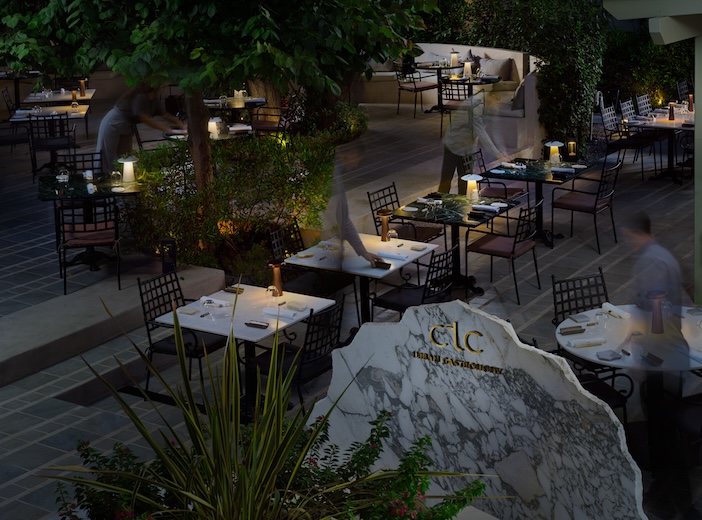
Athens suits such a place. It is a city of contradictions – mopeds and marble, democracy and disrepair – and CTC belongs here, on the fringes, precisely because it doesn’t quite belong. It is a restaurant which asks for attention and sometimes patience, but gives in return focus, generosity, and depth.
This is not comfort food, nor nostalgic grandstanding. It is something braver, more articulate – Greek cuisine viewed slightly askance, rendered by a clever man with good glasses and a great deal of restraint.
As one guest put it – not inaccurately – ‘Calling it a meal doesn’t do it justice.’ It doesn’t. And remarkably, it’s also extremely well-priced.
Where to Stay
In a city which measures time in ruins, calling a hotel ‘New’ is a little bold. But New Hotel earns the name. A former bureaucratic slab, it has been reworked by the Campana brothers into a kind of living sculpture – Brutalism softened by Byzantium.
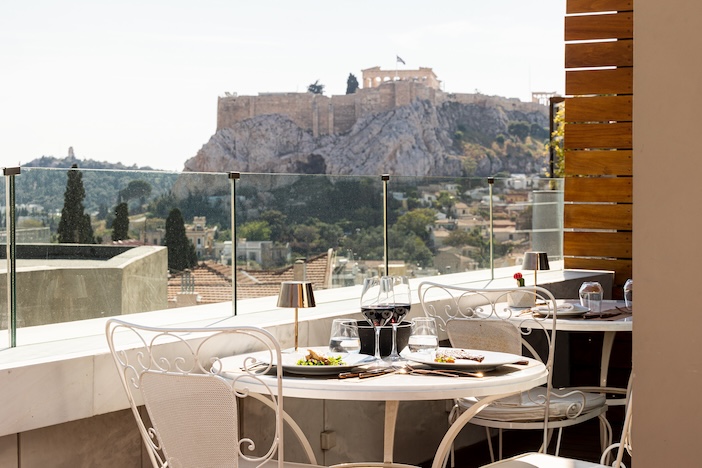
The rooms are slightly surreal, the beds inviting, the bathrooms oddly enigmatic and golden with several electric blinds. The lobby is a manifesto. From the rooftop penthouse, the Acropolis looms – pale, unmoved – as the cocktails in the adjacent Art Lounge come strong and cleverly made. This is not luxury in the traditional sense, but it is something rarer: it is substance with polish.
CTC Urban Gastronomy, Plateon 15, Athens 104 35. For more information, including details about the menu, please visit ctc-restaurant.com.
For more information about New Hotel, including details of their art, experiences and offers, please visit www.donkeyhotels.gr.

